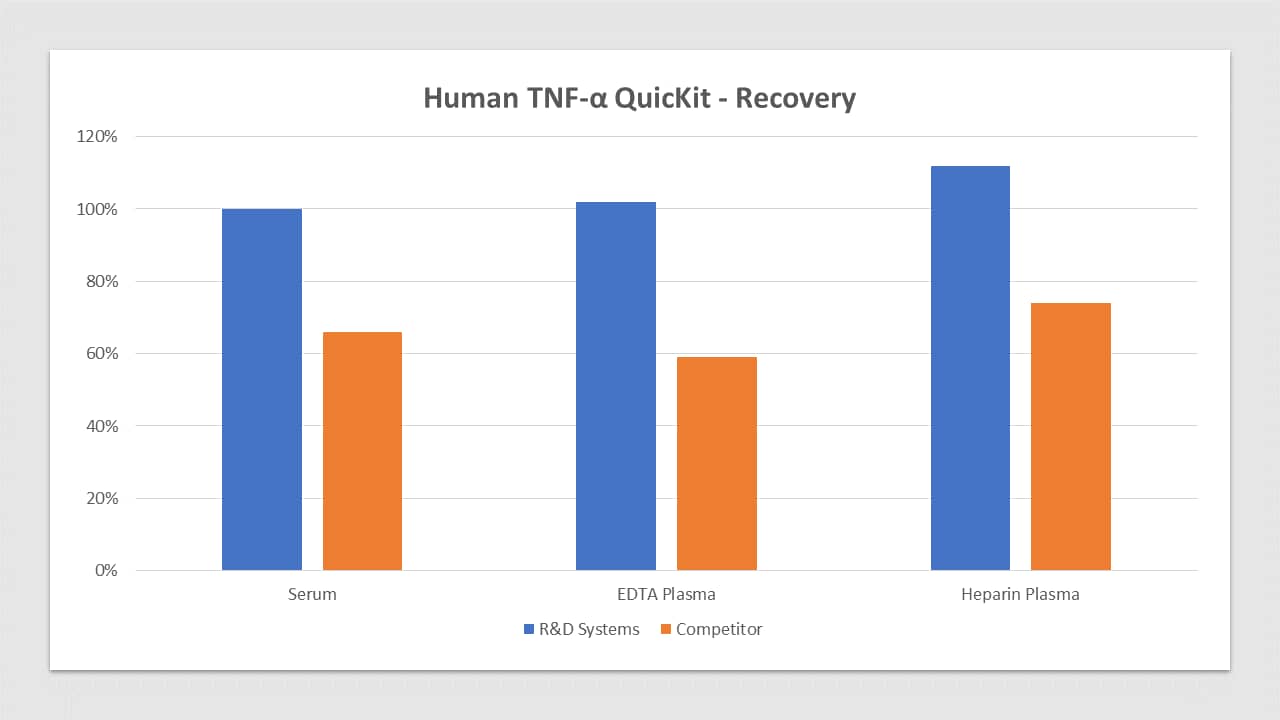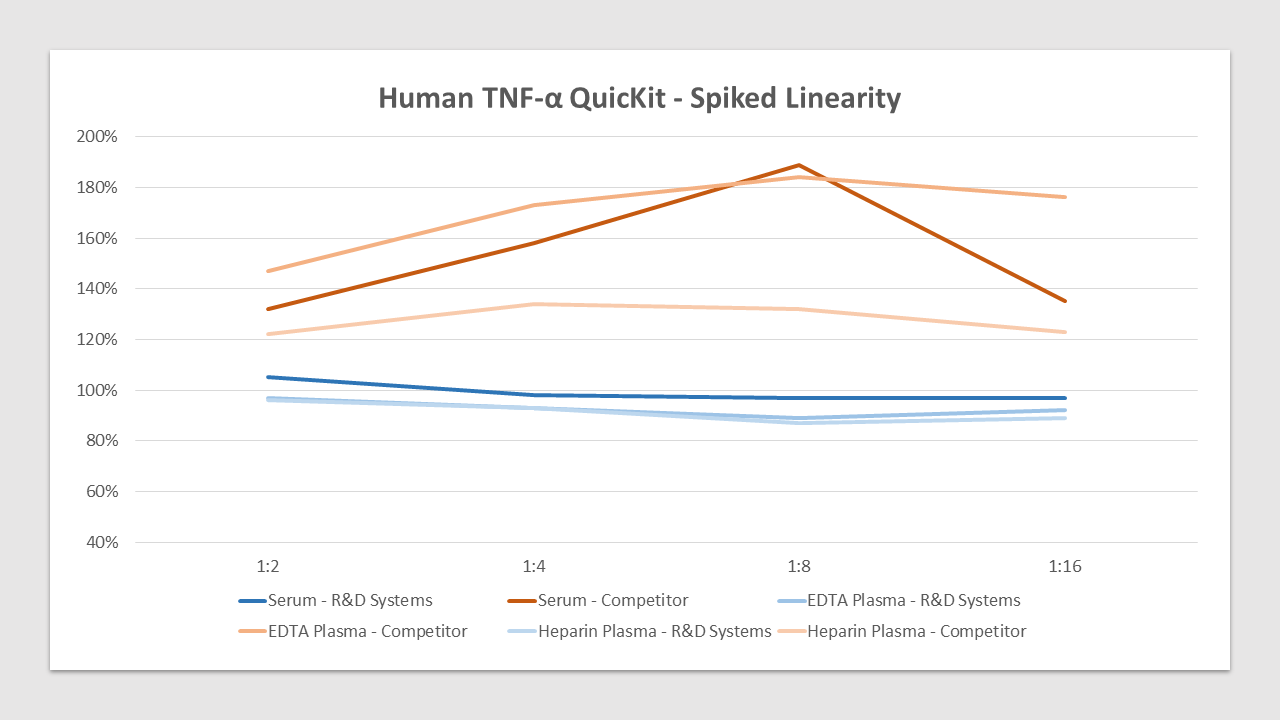Human TNF-alpha ELISA - Quantikine QuicKit Best Seller
R&D Systems, part of Bio-Techne | Catalog # QK210

Key Product Details
Assay Length
Sample Type & Volume Required Per Well
Sensitivity
Assay Range
Product Summary for Human TNF-alpha Quantikine QuicKit ELISA
Product Specifications
Measurement
Detection Method
Conjugate
Reactivity
Specificity
Cross-reactivity
Interference
Sample Values
Precision
Intra-Assay Precision (Precision within an assay) Two samples of known concentration were tested twenty times on one plate to assess intra-assay precision.
Inter-Assay Precision (Precision between assays) Two samples of known concentration were tested in ten separate assays to assess inter-assay precision. Assays were performed by at least three technicians.
Cell Culture Supernates, EDTA Plasma, Heparin Plasma, Serum
| Intra-Assay Precision | Inter-Assay Precision | |||
|---|---|---|---|---|
| Sample | 1 | 2 | 1 | 2 |
| n | 20 | 20 | 10 | 10 |
| Mean (pg/mL) | 200 | 1177 | 214 | 1243 |
| Standard Deviation | 3.64 | 28.5 | 13.9 | 67.8 |
| CV% | 1.8 | 2.4 | 6.5 | 5.5 |
Recovery for Human TNF-alpha Quantikine QuicKit ELISA
The recovery of human TNF-alpha spiked to three different levels in samples throughout the range of the assay in various matrices was evaluated.
| Sample Type | Average % Recovery | Range % |
|---|---|---|
| Cell Culture Media (n=4) | 120 | 108-126 |
| EDTA Plasma (n=2) | 95 | 87-106 |
| Heparin Plasma (n=2) | 89 | 81-103 |
| Serum (n=2) | 86 | 83-88 |
Linearity
To assess linearity of the assay, samples containing and/or spiked with high concentrations of human TNF-alpha in various matrices were diluted with the calibrator diluent to produce samples with values within the dynamic range of the assay.
Scientific Data Images for Human TNF-alpha Quantikine QuicKit ELISA
Human TNF- alpha Standard Curve
Human TNF- alpha Standard Curve
Human TNF-alpha ELISA Standard Curve
Preparation and Storage
Shipping
Stability & Storage
Background: TNF-alpha
Long Name
Alternate Names
Entrez Gene IDs
Gene Symbol
Additional TNF-alpha Products
Product Documents for Human TNF-alpha Quantikine QuicKit ELISA
Product Specific Notices for Human TNF-alpha Quantikine QuicKit ELISA
For research use only




